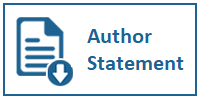Representasi Komunikasi Interpersonal terhadap Psychological well-being Seseorang dalam Film Animasi "Soul"
DOI:
https://doi.org/10.31937/ultimart.v14i2.2386Abstract
The animated film Soul tells about a person who is experiencing symptoms of a midlife crisis who gets important lessons for his life from the people around him. This film shows how the meaning of one's existence and happiness can be influenced by the existence of other humans through communication. If viewed from the perspective of communication science it is a process of interpersonal communication. The purpose of this study is to determine the meaning of denotation, connotation, and myth that represent the concept of interpersonal communication so that it can affect a person's psychological well-being in the animated film Soul. This film will then be dissected using Roland Barthes' semiotic analysis technique. This research is a qualitative descriptive study with documentation studies as research data collection techniques. The results showed that the practice of interpersonal communication in the film Soul is represented by communication scenes performed by two to three people. This scene involves Joe as a middle-aged man, a new soul named 22 and Joe's friend Dez, a barber who explains that he is happy with his job even though his dream as a veterinarian is not fulfilled. He loves his job because he can hear every experience from his customers as he cuts Joe's hair, which is actually in that scene, the soul that resides inside Joe's body are 22.
Keywords: semiotic analysis ; interpersonal communication ; animation.
Downloads
Published
How to Cite
Issue
Section
License
Authors retain copyright and grant the journal right of first publication with the work simultaneously licensed under a Creative Commons Attribution-ShareAlike International License (CC-BY-SA 4.0) that allows others to share the work with an acknowledgement of the work's authorship and initial publication in this journal.
Authors are able to enter into separate, additional contractual arrangements for the non-exclusive distribution of the journal's published version of the work (e.g., post it to an institutional repository or publish it in a book), with an acknowledgement of its initial publication in this journal.
Copyright without Restrictions
The journal permits the author(s) to hold the copyright without restrictions and will hold distributing rights without limitations.
The submitted papers are assumed to contain no proprietary material unprotected by patent or patent application; responsibility for technical content and for protection of proprietary material rests solely with the author(s) and their organizations and is not the responsibility of the Ultimart: Jurnal Komunikasi Visual or its Editorial Staff. The main (first/corresponding) author is responsible for ensuring that the article has been seen and approved by all the other authors. It is the responsibility of the author to obtain all necessary copyright release permissions for the use of any copyrighted materials in the manuscript prior to the submission.















